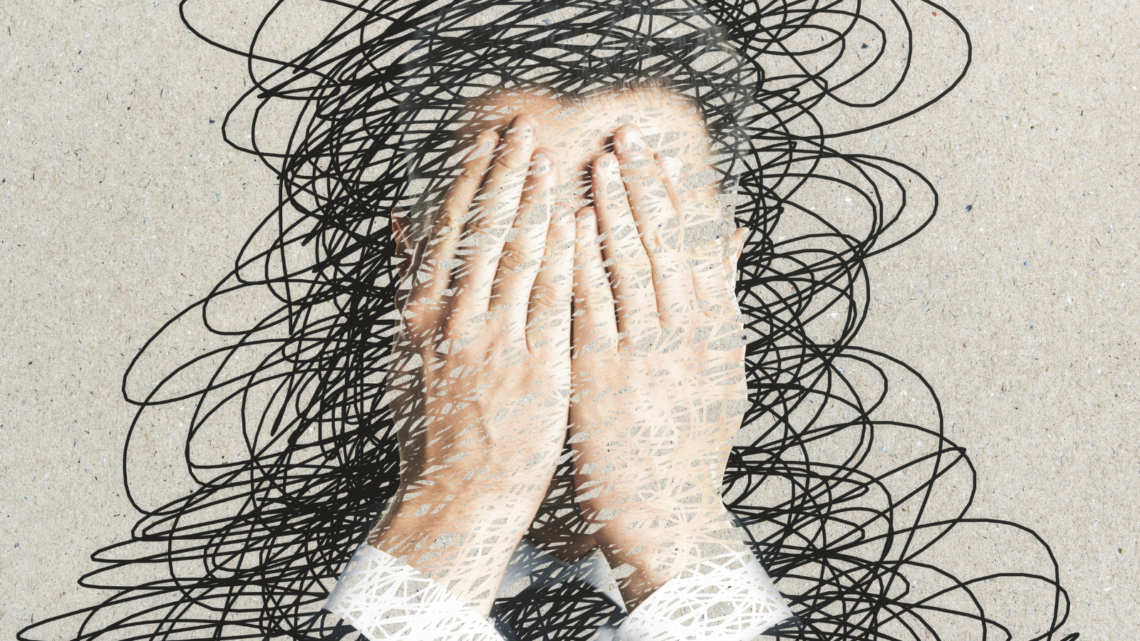Mental Health
-
How Stress Impacts Your Heart
In today’s world, where the pace of life seems ever-accelerating, stress has become an inescapable reality for many. This intangible yet profoundly impactful factor is not just a psychological burden but also carries significant implications for physical health, particularly concerning the heart. Research and clinical observations have consistently highlighted the intricate connections between stress and cardiovascular health, underscoring the need for a comprehensive understanding of this relationship to foster better health outcomes.
Stress, in its essence, is the body’s natural response to any demand or threat. When one perceives a situation as challenging or potentially harmful, the body’s defenses kick into high gear in a rapid, automatic process known as the ‘fight-or-flight’ reaction. This physiological response is fundamentally designed to protect the body, preparing it to face danger or flee to safety. However, the complexities of modern life mean that this mechanism is often triggered not by physical threats but by everyday situations, such as work pressures, financial worries, or personal conflicts.
The heart, a symbol of life and vitality, does not remain untouched by the repercussions of stress. Under stress, the body releases a surge of hormones, including adrenaline and cortisol, which prepare the body for immediate action. Adrenaline increases the heart rate and elevates blood pressure, momentarily boosting energy supplies. Cortisol, the primary stress hormone, increases sugars (glucose) in the bloodstream and enhances the brain’s use of glucose while curbing functions deemed nonessential in a fight-or-flight situation.
These hormonal responses are beneficial in the short term, providing the energy and focus required to handle an immediate crisis. However, when stress becomes chronic, the continuous state of elevated heart rate and high blood pressure can take a toll on the body. Over time, these conditions strain the heart and blood vessels, leading to an increased risk of hypertension, atherosclerosis (the buildup of plaque in the arteries), and, ultimately, more severe cardiovascular diseases such as heart attack or stroke. Moreover, stress influences heart health indirectly by driving individuals toward unhealthy coping mechanisms. It is not uncommon for people under chronic stress to adopt poor lifestyle choices such as smoking, excessive alcohol consumption, overeating, or lack of physical activity. These behaviours exacerbate the risk of cardiovascular disease by contributing to the development of high blood pressure, high cholesterol levels, and obesity, all of which are known risk factors for heart disease.
Addressing the impact of stress on the heart requires a multifaceted approach. Lifestyle modifications, including regular physical activity, a balanced diet, and adequate sleep, are foundational steps in mitigating the adverse effects of stress. Physical activity, in particular, is an effective stress reliever that improves heart health by lowering blood pressure, reducing the risk of heart disease, and enhancing overall well-being.
Beyond lifestyle changes, developing healthy coping strategies for stress is paramount. Techniques such as mindfulness, deep breathing exercises, and progressive muscle relaxation can help manage stress levels by focusing the mind and calming the body. These practices not only reduce the immediate feelings of stress but also have long-term benefits for heart health by moderating the body’s stress response.
In some cases, professional support may be necessary to tackle chronic stress effectively. Psychological therapies, such as cognitive-behavioral therapy (CBT), have been shown to be effective in managing stress, improving coping mechanisms, and reducing the risk of heart disease. Furthermore, in situations where stress is linked to mental health conditions like anxiety or depression, addressing these underlying issues is crucial for both mental and cardiovascular health.
-
Mind-Body Connection: Psychology’s Role in Health
Psychology plays pivotal and profound roles that intertwine the complex threads of mental, emotional, and physical states. The field of health psychology, therefore, underscores the indelible interconnectivity between our psychological factors and other aspects revolving around general health. In manifold ways, this exploration opens a window of understanding how the mental state affects our physical health and within that context, the impacts of physical health on the mental status hence manifesting the inseparable connection between mind and body.
At the centre of this nexus, however, has always been stress, an ever-present aspect to modern life that epitomizes psychological-physical health. Stress acts as a trigger, especially when it’s chronic, releasing a surge of biological responses that could be detrimental to our bodies. This is clearly manifested in the fact that stress hormones, such as cortisol, can interfere with several body systems and provoke problems ranging from hypertension and weakened immune response, to an increased risk of heart disease. Psychological factors also contribute to magnifying medical conditions such as obesity, diabetes, and gastrointestinal disorders, thus making it evident how frame of mind can lead to physical damage. In addition, recognition is also being given towards disorders in mental health such as depression and anxiety, towards the profound impacts of their effects on physical health. Depression, for instance, besides its debilitation mentally, has been related to deteriorating conditions of the physical stature such as chronic pain. This makes this relationship bidirectional further complicated by the fact that then physical illnesses may aggravate mental health problems which can then contribute to a vicious circle of influence as well thus giving us the insight in to need for intervention in both the psychological and physical health.
Moreover, psychology plays a large part in health behaviours shaping our selections of what to do and how much to do. From our dietary selection patterns or exercise patterns to smoking or drinking alcohol, psychological dynamics figure in how one makes their health behaviors choices. Motivation, perceived self-efficacy, and barriers are psychological constructs which assist in the understanding of how we perceive health approaches and lifestyle choices. For instance, the perceived belief of an individual in being able to bring changes in their health (self-efficacy) can greatly influence their intention to develop healthy behaviour like doing exercises and conformity with the doctor’s advice.
Psychology also affects health in the area of patient-physician rapport and in handling chronic diseases. The way doctors relate to patients and how they handle the patients can cause a major difference in the outcome of the patient. Supportive empathetic approaches can improve their engagement with treatment plans and hence improve in health outcomes. Similarly, psychological approaches such as cognitive-behavioural therapy have proven successful in managing chronic illnesses to further emphasise the role of a psychological approach to health care.
Psychology and health are interrelated at various dynamic, intricate levels requiring an all-round approach to health care. In Canada, like much of the world, the same development has been recognized that makes salient for integrating psychological considerations in health care and public health initiatives. Doing so recognizes not only the complexity of human health, but it also provides a more holistic framework through which to approach the collective factors that contribute to well-being. Embracing the embodiment of the mind, we find ourselves discovering more effective ways to encourage health and greater possibilities for healing illness.
-
Mental Health in Winter
During the winter season, it’s not just the earth that experiences the profound effects of this seasonal shift. The human psyche, intrinsically connected to the rhythms of nature, also undergoes a significant transformation. In this exploration, we delve into the intricate relationship between winter weather and mental health, particularly focusing on the phenomenon commonly referred to as the ‘winter blues’ or Seasonal Affective Disorder (SAD).
The Chilling Reality of Seasonal Affective Disorder
Seasonal Affective Disorder is a type of depression that’s directly related to changes in seasons. For most individuals affected by SAD, symptoms start in the fall and continue into the winter months, zapping energy and triggering moodiness. Although less common, SAD can cause depression in the spring or early summer.
The Science Behind Seasonal Shifts
To comprehend how winter uniquely impacts mental health, it’s essential to understand the biological underpinnings. The shorter days and longer nights of winter lead to reduced exposure to sunlight. This lack of sunlight can disrupt your body’s internal clock, or circadian rhythm, which lets you know when it’s time to be awake or asleep. The disruption in circadian rhythm can lead to feelings of depression.
Additionally, the decrease in sunlight can cause a drop in serotonin levels, a neurotransmitter that affects mood, appetite, sleep, and memory. Serotonin production is sparked by sunlight, so its reduced levels can lead to feelings of depression.
Another key player is melatonin, a hormone that regulates sleep patterns and mood. The production of melatonin increases in the dark. Therefore, during the long nights of winter, higher levels of melatonin can cause feelings of lethargy and symptoms of depression.
The Psychological Impact of Frigid Climes
The psychological effects of winter go beyond biological factors. The cold weather and lack of vibrant outdoor activities can lead to feelings of isolation and loneliness. The inclement weather can also limit social interaction and physical activity, both of which are crucial for maintaining good mental health.
Moreover, the winter season brings about significant lifestyle changes. People tend to stay indoors more, exercise less, and might change their eating habits, often leading to increased consumption of carbohydrates and comfort foods. These changes can contribute to feelings of sluggishness and decreased motivation, exacerbating the symptoms of SAD.
Combating the Winter Blues
While winter’s impact on mental health can be substantial, there are several effective strategies to combat these effects. Light therapy, for instance, has been shown to be particularly effective for SAD. It involves sitting near a device called a light therapy box, which emits bright light mimicking natural outdoor light.
Regular exercise, particularly aerobic exercise, can help relieve stress and anxiety, both of which can worsen SAD. Exercise also helps to boost serotonin levels in the brain.
Maintaining a regular schedule during the winter months can also help. This includes having a consistent sleep routine, eating healthy meals at regular times, and incorporating social activities into your calendar, even if they’re virtual.
Lastly, Cognitive Behavioral Therapy (CBT) specifically tailored for SAD can be an effective treatment. CBT can help individuals change negative thought patterns and behaviors that make them feel worse, thereby improving their symptoms.
As we embrace the quietude and introspection that winter offers, it’s vital to be mindful of the profound impact the season can have on our mental health. Understanding the interplay of biological and psychological factors that contribute to the winter blues is the first step in managing its symptoms. By adopting appropriate coping strategies and seeking professional help when necessary, we can mitigate the effects of SAD and find solace and joy even in the coldest, darkest months.
-
Managing Stress-Related Headaches
In the fast-paced rhythm of modern life, stress has become an inescapable companion for many, often manifesting itself through physical symptoms. One such common physical manifestation is stress-related headaches, a discomfort that a significant portion of the population experiences. Understanding the intricate link between stress and headaches, and learning how to manage these headaches, is essential for both physical and mental well-being.
The Connection Between Stress and Headaches
Headaches, in their various forms, are among the most prevalent health complaints. When we consider stress-related headaches, we primarily refer to tension-type headaches and migraines, both of which are significantly influenced by stress. Tension-type headaches, characterized by a dull, aching sensation and a feeling of tightness or pressure across the forehead or on the sides and back of the head, are commonly linked to stress. Stress triggers muscle tension and contraction, leading to this type of headache. On the other hand, migraines, which present as a throbbing pain often accompanied by nausea, vomiting, and sensitivity to light and sound, can be exacerbated by stress as well. Physiologically, stress leads to the activation of the body’s “fight or flight” response, resulting in the release of chemicals like adrenaline and cortisol. These chemical changes can influence the blood vessels and nerves in the brain, leading to headaches.
Psychological Factors and Stress-Related Headaches
The psychological aspect of stress-related headaches is as significant as the physiological one. Stress can stem from various sources: work pressure, personal relationships, financial worries, or chronic health issues. The body’s reaction to these stressors, both psychologically and physically, often culminates in a headache. Additionally, the fear of headache recurrence can create a cycle of anxiety and stress, further perpetuating the problem.
Managing Stress-Related Headaches
Addressing stress-related headaches involves a dual approach: managing the headaches themselves and tackling the underlying stress.
Medical Treatment
Over-the-counter pain relievers like acetaminophen, ibuprofen, or aspirin can be effective for occasional stress-related headaches. However, their overuse can lead to medication-overuse headaches, a condition where the frequent use of headache medications paradoxically leads to more headaches. For chronic or severe cases, a healthcare provider may prescribe other medications, such as tricyclic antidepressants, which can prevent headaches by affecting the levels of serotonin and other chemicals in the brain.
Stress Management Techniques
Incorporating stress management techniques into daily life is crucial. Techniques such as deep breathing exercises, progressive muscle relaxation, and mindfulness meditation have proven effective in reducing stress levels. Regular physical activity, adequate sleep, and a balanced diet also play a vital role in stress management.
Cognitive-Behavioral Therapy (CBT)
CBT, a type of psychotherapy, is highly effective in managing stress and anxiety. It involves identifying and challenging negative thought patterns and behaviors and replacing them with healthier ones. CBT can help individuals develop coping strategies to handle stress better, potentially reducing the frequency and severity of stress-related headaches.
Lifestyle Modifications
Making lifestyle changes can have a profound impact on managing stress-related headaches. This includes establishing a regular sleep pattern, engaging in regular physical activity, maintaining a healthy diet, and avoiding known headache triggers like certain foods, dehydration, or lack of sleep.
Stress-related headaches are a tangible manifestation of the psychological and physical strain that stress places on the body. While medications can provide relief, a comprehensive approach that includes stress management techniques, lifestyle modifications, and professional support is crucial for long-term management. Understanding the link between stress and headaches and adopting proactive measures can significantly improve quality of life, turning a pain in the head into a problem that can be effectively managed and controlled.
-
Understanding the Health Impacts of Stress
Stress, a common experience in the fast-paced modern world, can significantly impact an individual’s health. This condition, stemming from the body’s response to challenging or threatening situations, activates a cascade of biological processes, influencing various aspects of health. Understanding stress’s diverse effects on physical and mental wellbeing is crucial, especially considering the complexities of today’s lifestyle.
Physiological Responses to Stress
At the core of stress is the body’s “fight or flight” response, a primordial mechanism designed to deal with perceived threats. This response triggers the release of hormones like adrenaline and cortisol, preparing the body to react swiftly. These hormones increase heart rate, elevate blood pressure, and boost energy supplies. Chronic stress, however, can lead to an overexposure to these hormones, potentially causing a range of health issues.
Cardiovascular Health and Stress
One of the most significant impacts of chronic stress is on cardiovascular health. Prolonged exposure to stress hormones can lead to heightened blood pressure and an increased risk of hypertension, a critical factor in heart disease. Furthermore, stress can influence behaviours such as unhealthy eating, smoking, and lack of physical activity, all of which are risk factors for heart disease and stroke.
The Gastrointestinal Perspective
Stress can also profoundly affect the gastrointestinal (GI) system. It can alter the gut motility and secretion, leading to symptoms such as heartburn, indigestion, or irritable bowel syndrome (IBS). Moreover, stress may exacerbate conditions like gastroesophageal reflux disease (GERD) and peptic ulcers.
Impact on the Immune System
The immune system is not immune to the effects of stress. Chronic stress can suppress immune function, making the body more susceptible to infections and slowing down wound healing. Additionally, it can exacerbate autoimmune conditions and allergies.
Mental Health and Stress
Mental health is intimately linked with stress. Chronic stress is a known risk factor for mental health disorders such as anxiety, depression, and insomnia. It can lead to feelings of overwhelm, irritability, and a reduced capacity to cope with everyday challenges, significantly diminishing quality of life.
Stress and Weight Management
The relationship between stress and weight is complex. Stress can lead to changes in appetite and food preferences, often causing an increase in cravings for high-fat, sugary foods. This, coupled with cortisol’s role in fat storage, can contribute to weight gain and obesity, which are risk factors for numerous health conditions like diabetes and heart disease.
Hormonal Imbalance and Reproductive Health
Stress can disrupt hormonal balance, impacting reproductive health in both men and women. In women, it can affect menstrual cycles, potentially leading to irregular periods or exacerbating symptoms of premenstrual syndrome (PMS). In men, chronic stress can impair testosterone production and sperm quality, impacting fertility.
The Skin-Stress Connection
The skin, the body’s largest organ, can also bear the brunt of stress. Conditions like eczema, psoriasis, and acne may flare up during periods of high stress. Moreover, stress can delay the skin’s healing processes, prolonging recovery from injuries or surgeries.
Managing Stress for Better Health
Given the wide-ranging impacts of stress on health, effective management strategies are vital. These include lifestyle changes like regular physical activity, a balanced diet, adequate sleep, and relaxation techniques such as meditation and deep breathing. Professional help through counselling or therapy can be beneficial, especially for those struggling to manage stress on their own.
Stress is not merely a psychological issue but a significant health concern with far-reaching implications. From increasing the risk of heart disease to affecting mental wellbeing, its effects are diverse and profound. Addressing stress through a holistic approach involving lifestyle changes and, when necessary, professional intervention, is essential for maintaining optimal health and wellbeing. As we navigate the challenges of modern life, acknowledging and managing stress becomes a critical component of our overall health strategy.
-
Embracing Mental Wellbeing this Holiday Season
The holiday season, often portrayed as a time of joy and gathering, can paradoxically also usher in a period of increased stress, anxiety, and emotional complexity for many individuals. The imagery of idyllic family gatherings and the societal expectation of unbridled happiness can sometimes contrast sharply with the realities faced by individuals, creating a backdrop where mental health becomes an ever-crucial topic to address.
For many, the holiday season intensifies feelings of loneliness and isolation, especially for those who are away from family or have lost loved ones. The emphasis on social gatherings and familial closeness can amplify the sense of loss and detachment. Moreover, the perceived pressure to feel merry can exacerbate feelings of sadness or depression for those struggling with mental health issues, making the festive season a challenging time. Additionally, the holiday season often brings with it a surge in activities and responsibilities, including social engagements, gift shopping, and preparation of elaborate meals. This escalation in demands can lead to overwhelming stress and anxiety. The financial burden of the holidays, with the expectation of buying gifts and hosting events, can also contribute significantly to this stress, particularly for those already managing tight budgets or financial insecurity. Family dynamics also play a pivotal role in shaping one’s experience of the holiday season. For many, family gatherings can be a source of tension and conflict, resurrecting old disputes and creating an environment that is far from the peaceful and harmonious ideal often depicted. Navigating these dynamics while trying to maintain a semblance of festive spirit can be mentally exhausting.
In response to these challenges, it is vital to adopt strategies that prioritize and support mental well-being. One of the first steps in this journey is the acknowledgment and acceptance of one’s feelings. Recognizing that it is normal to feel a range of emotions, including sadness or loneliness, during the holidays is crucial. Giving oneself permission to feel these emotions without guilt can be liberating and a first step towards managing them.
Creating realistic expectations for the holiday season is another essential strategy. This involves understanding that it’s okay for the holidays not to be perfect or even particularly joyful. Adjusting expectations can alleviate the pressure to create the ‘perfect’ holiday experience, thereby reducing stress and potential disappointment.
Setting boundaries is equally important. This could mean choosing which social events to attend, deciding how much to spend on gifts, or even limiting the amount of time spent with certain family members to avoid conflicts. Asserting these boundaries can help in maintaining a sense of control and personal peace.
Self-care should be a priority during the holiday season. This includes ensuring adequate rest, engaging in regular physical activity, and making time for activities that bring joy and relaxation. Whether it’s reading a book, taking a leisurely walk, or practicing meditation, these acts of self-care can provide a much-needed respite from the hustle and bustle of the festive season. For those who find the holidays particularly difficult, seeking support can be crucial. This might involve talking to a trusted friend or family member or seeking professional help from a mental health practitioner. Community resources such as support groups can also offer a sense of connection and understanding for those who may feel isolated during this time.
Lastly, finding ways to give back to the community can also be a powerful way to enhance mental well-being. Volunteering or helping those in need can provide a sense of purpose and fulfillment, shifting focus from one’s challenges and contributing to a greater good.
While the holiday season is often heralded as the most wonderful time of the year, it is important to recognize and validate the complex emotions it can evoke. By adopting strategies that prioritize mental well-being, setting realistic expectations, and seeking support when needed, it is possible to navigate this festive season with a sense of balance and peace. Remember, it is okay to step back and prioritize your mental health during this time – doing so might just be the best gift you can give yourself this holiday season.
-
Breaking the Stigma of Men’s Mental Health
Mental health is an integral part of our overall well-being, yet it often does not receive the same attention and care as physical health, especially among men. In Canada, as in many parts of the world, there exists a significant stigma surrounding men’s mental health, which can have far-reaching consequences for individuals and society as a whole. Stigma refers to the negative stereotypes and associations that people have about mental health issues. It manifests in various ways, from discriminatory behaviour and prejudiced attitudes to internalized shame and social exclusion. For men, this stigma is often compounded by traditional gender norms and expectations that promote emotional stoicism and self-reliance.
In Canadian society, men are frequently conditioned from a young age to suppress their emotions and avoid showing vulnerability. Phrases like “boys don’t cry” or “be a man” are indicative of a culture that equates masculinity with toughness and emotional restraint. These expectations can create a barrier to seeking help, as men may fear being perceived as weak or failing to meet the societal standards of manhood. The impact of this stigma can be seen in the mental health statistics among Canadian men. Men have lower rates of diagnosed depression and anxiety compared to women, yet they account for a disproportionately high number of suicides. According to the Canadian Mental Health Association, men are four times more likely to die by suicide than women, and it’s the second leading cause of death among Canadian men aged 15 to 44. The reluctance to seek help is not the only consequence of stigma; it also hinders the ability of men to talk openly about their struggles, limiting the opportunities for support from friends, family, and mental health professionals. This isolation can exacerbate mental health issues, creating a cycle that is difficult to break.
Addressing the stigma requires a multi-faceted approach. Public awareness campaigns are essential to educate the populace about mental health and to challenge the misconceptions that contribute to the stigma. The Canadian government and mental health organizations have launched initiatives such as #Movember and #BellLetsTalk to encourage open conversations about mental health, particularly among men. In addition to public discourse, there is a need for culturally sensitive mental health services that cater specifically to men. This includes creating safe spaces for men to discuss their mental health without judgment, as well as training for healthcare providers to recognize and address the unique ways in which men may express psychological distress. Workplace policies also play a crucial role. Canadian employers can contribute to de-stigmatizing men’s mental health by implementing employee assistance programs, providing mental health days, and fostering a work environment that encourages openness and support for those dealing with mental health issues.
Lastly, individual action is critical. Friends and family members can be allies by actively listening, offering support, and encouraging the men in their lives to seek help when needed. It’s about changing the conversation and making it clear that mental health is not a sign of weakness, but rather a part of human health that requires care and attention.
The stigma surrounding men’s mental health is a significant barrier to well-being and quality of life. Through concerted efforts at the individual, community, and institutional levels, we can create a more supportive and understanding society that allows men to express vulnerability and seek help without fear of judgment or discrimination.
-
Unveiling Myths in Men’s Mental Health
In the intricate tapestry of health discourse, men’s mental health often remains an understated thread, overshadowed by societal misconceptions and traditional stereotypes. Despite significant strides in public awareness, the stigmatization and misunderstanding of men’s psychological well-being persist.
This article aims to dismantle some of the entrenched myths surrounding men’s mental health, casting a light on the realities that belie popular assumptions.
Myth 1: Men Are Less Likely to Have Mental Health Issues Than Women
Statistics Canada’s surveys indicate that men are just as susceptible to mental health disorders as women. However, the manifestation and reporting of these issues differ significantly due to cultural expectations. Men are less likely to seek help or even acknowledge their struggles, not because they are inherently more resilient, but often due to the fear of appearing vulnerable or weak, which is at odds with traditional masculine norms.
Myth 2: Men Should Manage Their Mental Health Alone
The long-standing notion that men should be self-reliant and manage their emotional turmoil independently is not only unrealistic but also dangerous. This myth propagates the idea that seeking support is an admission of defeat, thus reinforcing the harmful practice of self-isolation during times of mental distress. It’s imperative to understand that mental health is akin to physical health; just as one would seek a physician’s expertise for a physical ailment, consulting mental health professionals for psychological concerns should be normalized.
Myth 3: Mental Health Problems Are a Sign of Weakness in Men
Strength and stoicism are qualities often lauded in men; conversely, admitting to mental health challenges is erroneously perceived as a sign of weakness. This stigma is a significant barrier preventing men from accessing care. It’s critical to redefine what strength means in the context of mental health, emphasizing that acknowledging one’s struggles and seeking help exemplify courage and determination.
Myth 4: Men Do Not Experience Emotional Pain as Intensely as Women
The myth that men are less emotional or that they experience pain less intensely is a gross oversimplification. Emotional pain is a human experience, not gendered. Men experience the full range of emotions but often express them differently due to societal expectations. These differences in expression should not be mistaken for a lack of depth in feeling.
Myth 5: Men’s Mental Health Issues Do Not Affect Others
Mental health issues in men have a ripple effect, impacting families, workplaces, and communities. When men suffer in silence, it not only affects their well-being but also that of those around them. It’s essential to recognize that mental health is a collective issue, not an individual one, and addressing it can lead to positive outcomes for the wider society.
As we navigate the complexities of mental health, particularly within the male demographic, it is paramount to challenge these myths with open dialogues and education. Dispelling misconceptions paves the way for a more supportive environment, where men are empowered to seek help without fear of judgment. It’s time to mind the gap in our understanding of men’s mental health and bridge it with empathy, knowledge, and unwavering support.
-
Prioritizing Mental Health
World Mental Health Day, observed on October 10th globally, is a vital occasion for the collective engagement of communities, institutions, and individuals to shine a spotlight on the imperative matter of mental health. In a country like Canada, where more than 5 million people meet the diagnostic criteria for a mental health disorder, the dialogue around mental health is not only necessary but crucial.
The Impact of Mental Health
Mental health extends its tendrils into every aspect of our lives, influencing our thoughts, behaviours, emotions, and overall wellbeing. For many Canadians, struggles with mental health are a daily reality, whether it’s navigating the challenges of anxiety, depression, bipolar disorder, or another mental health condition. Acknowledging this pervasive impact, this day stands as a reminder that mental health is an indispensable component of overall health and deserves equal attention and investment.
In Canada, mental health concerns do not discriminate, affecting individuals across all demographics. By the age of 40, about 50% of the population will have or have had a mental illness; and yet, stigma and misconceptions surrounding mental health persist. Employers, educational institutions, and society at large often overlook the silent struggles that many Canadians grapple with daily, underscoring the urgency with which we need to bring mental health to the forefront of national dialogue.
The global pandemic has added another layer of complexity to the mental health landscape. Isolation, economic instability, and the pervasive fear and uncertainty have catalyzed a surge in mental health issues across the country. Frontline workers, young adults, and those with pre-existing mental health conditions have been particularly impacted, emphasizing the necessity to formulate and implement robust mental health strategies and supports.
Unveiling the Stigma
Stigma attached to mental health remains one of the primary barriers preventing individuals from seeking help. Stereotypes and misapprehensions frequently stymie discussions, often resulting in isolation and exacerbating mental health struggles. World Mental Health Day serves as a platform to dismantle these stigmas, creating an environment where open dialogue is encouraged, and support is readily available.
Canada has taken strides towards reducing mental health stigma with initiatives like Bell Let’s Talk Day. However, the journey is far from over. Normalizing mental health conversations and ensuring accessible mental health resources, especially in workplaces and educational settings, are pivotal to fostering an inclusive and supportive environment.
Mental Health and Wellbeing as a Collective Responsibility
Prioritizing mental health demands collective action from governments, organizations, communities, and individuals alike. Implementing comprehensive mental health strategies, providing sufficient funding, and integrating mental health into all aspects of policymaking and planning is paramount. In workplaces, creating environments that prioritize employee mental health through robust wellness programs, flexible working conditions, and access to mental health resources is crucial. Educational institutions must also embed mental health into their curriculums, equipping young Canadians with the tools and knowledge to navigate their mental wellbeing adeptly.
Enhancing Accessibility and Equity in Mental Health Care
A nuanced approach to mental health also recognizes the importance of accessibility and equity. While Canadians are fortunate to have a healthcare system that includes some mental health services, disparities exist, particularly for marginalized communities. Tailoring mental health services to be culturally sensitive and accessible to all, regardless of socioeconomic status, geography, race, or gender, is imperative in establishing a mental health system that caters to all Canadians.
Personal Mental Health Management: Empowering Individuals
In conjunction with systematic support, personal mental health management is vital. Empowering individuals with knowledge and resources to navigate their mental health, such as mindfulness techniques, access to counselling, and mental health literacy, is pivotal in creating a society where mental wellbeing is not merely a concept but a lived reality.
World Mental Health Day is a catalyst for ongoing dialogue, education, and action pertaining to mental health. In a world where the strains on mental health are increasingly complex and multifaceted, our commitment to acknowledging, understanding, and actioning mental health considerations must similarly evolve. Let this World Mental Health Day be a poignant reminder that mental health is not merely an individual concern, but a collective responsibility that we must all actively engage with, today and every day that follows.
-
Overdose Awareness in Canada
In recent years, Canada has witnessed a surge in overdose-related deaths, drawing attention to the devastating impact of drug misuse and addiction on individuals, families, and communities. The rapid proliferation of powerful synthetic opioids, such as fentanyl, has compounded the crisis, claiming thousands of lives annually. This article aims to shed light on the factors that contribute to addiction, the signs of an overdose, and the increasing role of fentanyl in overdose deaths.
Addiction: A Multifaceted Issue
Addiction is a complex, multifaceted issue that cannot be attributed to any one factor. While the causes of addiction are varied, some contributing factors are more commonly seen than others:
- Biological Factors: Genetics play a role in addiction. Individuals with a family history of addiction may be predisposed to it.
- Mental Health Disorders: Those with mental health issues such as depression, anxiety, or PTSD may turn to drugs as a form of self-medication.
- Environmental Factors: Exposure to drug use at an early age, peer pressure, lack of social support, and poor socioeconomic conditions can all contribute to the development of addiction.
- Early Use: Using drugs at an early age can increase the risk of addiction. The developing brain is more vulnerable to the effects of substances and can become addicted more easily.
Recognizing the Signs of Overdose
An overdose occurs when an excessive amount of a drug overwhelms the body, leading to potentially life-threatening symptoms. Recognizing the signs of an overdose can save lives:
- Depressed Respirations: Slow, shallow, or irregular breathing.
- Unconsciousness: An inability to wake the person up, even when they are stimulated.
- Choking or Gurgling Sounds: Often referred to as a “death rattle.”
- Bluish Skin or Lips: Cyanosis, a bluish discolouration of the skin and lips, indicates a lack of oxygen in the blood.
- Pinpoint Pupils: The pupils may become constricted and appear abnormally small.
- Seizures: Some substances may cause seizures when taken in excessive amounts.
- Confusion, Agitation, or Paranoia: Some substances can cause profound changes in cognition and mood, leading to confusion, agitation, or paranoia.
Fentanyl: An Escalating Threat
Fentanyl, a synthetic opioid that is 50 to 100 times more potent than morphine, has been an increasing problem in Canada. Originally designed for medical use, this powerful drug has found its way into the illicit drug market, often being mixed with other substances, such as cocaine or heroin, unbeknownst to users. Its potency and widespread presence make it particularly dangerous. A small amount of fentanyl can be lethal, and individuals who unknowingly consume it are at high risk of overdose.
To combat the fentanyl crisis, Canadian authorities have implemented a number of measures, including increased surveillance of the illicit drug market, public awareness campaigns, and the distribution of naloxone, an opioid antagonist that can reverse the effects of an overdose. Naloxone kits are now widely available across the country, and training on how to use them is provided to first responders, health care professionals, and the general public.
The Ripple Effect of Overdose
The impact of overdose extends beyond the individual to their friends, families, and communities. The emotional and psychological toll can be immense.
- Grief and Loss: The sudden death of a loved one due to overdose is traumatic and can lead to intense grief and loss. Family and friends are often left struggling to cope with their emotions and the abruptness of their loss.
- Blame and Guilt: Often, those left behind may experience feelings of blame or guilt, questioning whether they could have done something to prevent the overdose.
- Stigma: There is a significant stigma associated with addiction and overdose. This stigma can result in isolation for both the individual with the addiction and their loved ones. Families may feel ashamed or judged and may struggle to find support.
- Economic Impact: Addiction can strain a family’s finances, and the unexpected death due to overdose can bring about additional financial difficulties, including funeral costs.
Treatment Options for Addiction
Addressing addiction requires a multi-pronged approach. There are several treatment options available, and the best approach often depends on the individual’s specific needs.
- Detoxification: The first step is often detoxification, which involves removing the substance from the body and managing withdrawal symptoms. This process can be done in a medical setting or at home, depending on the severity of the addiction.
- Behavioral Counseling: Individual, group, or family counseling can help people with addiction develop healthier patterns of behavior and improve their interpersonal relationships.
- Medication-Assisted Treatment (MAT): Medications can be used to manage withdrawal symptoms, reduce cravings, or treat co-occurring mental health disorders. For example, methadone and buprenorphine are used to treat opioid addiction, while naltrexone can help with alcohol addiction.
- Inpatient or Residential Treatment: Some individuals may benefit from a structured, intensive treatment program in a residential setting, particularly if they have a severe addiction or co-occurring mental health disorders.
- Support Groups: Peer support can be an essential part of the recovery process. Support groups such as Alcoholics Anonymous or Narcotics Anonymous provide a space for individuals in recovery to share their experiences and receive support from others who have been through similar struggles.
- Harm Reduction Strategies: For some individuals, abstinence may not be a realistic or desirable goal. Harm reduction strategies, such as supervised consumption sites or needle exchange programs, aim to reduce the risks associated with drug use without necessarily requiring abstinence.
It is essential to remember that recovery is a process and that setbacks are a natural part of that process. Seeking help is a crucial step, and support from friends, family, and professionals can make a significant difference in the journey toward recovery.
Learn more at OverdoseDay.com








